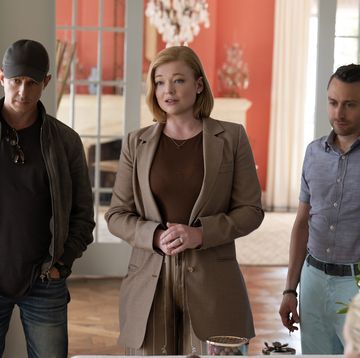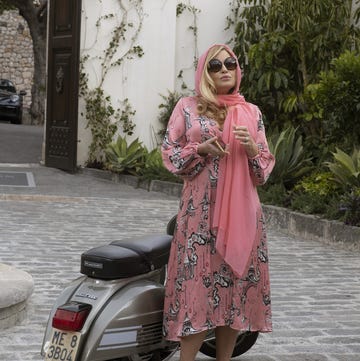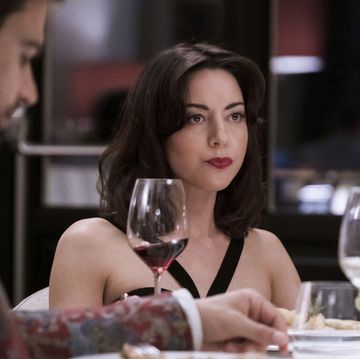The room is always the same: mid century modern design with ice-blue velvet seating and mustard-yellow accents. The windows stretch floor to ceiling. They face a busy San Francisco street. Squinting against the sun streaming in on an average workday, you can see the famed Golden Gate or its lesser-known cousin that leads to Oakland. The smell of organic coffee and macrobiotic lunch served by silent, underpaid service staff slides in under the chrome door handles.
The pandemic-friendly virtual climate has changed nothing. Well-paid, shabbily dressed employees demand quick remedies to centuries' worth of disenfranchisement. Nervous middle managers in charge of ensuring that their racially homogenous teams remain productive, and thereby quiet, inquire about best practices. How can I prevent racial asymmetry, bias, inequity? Each a poorer euphemism than the last for the remnants of chattel slavery, genocide, and forced labor.
Sessions like these are endemic in the $8 billion diversity, equity, and inclusion (DEI) industry. Following the murder of George Floyd by a Minneapolis police officer and amid the glaring racial disparities of the COVID-19 pandemic, interest in DEI jobs surged by 30 percent. But where did DEI come from? Who runs DEI initiatives? And, most importantly, why does DEI so often inhibit the real change for which many are calling?
I came to DEI by way of political education—the kind of Sunday-afternoon, anti-racist learning that happens in repurposed school cafeterias. Knowing nothing of its roots or realities, I found that DEI asked incomplete questions like, “How to increase representation of people of color,” without ever mentioning that they would be working in companies and industries that deepen inequality. Movements are about reallocating power, but DEI preoccupies itself with reorganizing people.
Thirty years of scholarship document DEI’s internal issues, but the most significant lies in its origin. While social justice activists defined the ideas of racial justice at DEI’s core, they were neither entrusted nor tasked with carrying it out in the American workplace.
DEI is a corporate litigation shield meant to protect those in power from the people over whom they wield it. The industry arose in the early ’60s to avoid inaction John F. Kennedy outlined at the beginning of the decade. In Executive Order 10925, Kennedy told government contractors to "take affirmative action to ensure” that employees be treated fairly irrespective of their race, religion, or nationality. Shortly after, the Civil Rights Act became law following a series of bloodstained boycotts and marches. Legal policies trapped DEI in the fear of legal repercussions and made corporations eager to avoid splashy lawsuits.
The DEI industry is dominated by what scholars call “personnel managers,” employees in human resources. Between the 1960s and ’80s, these administrators were true to their vocation, concerning themselves with avoiding lawsuits and increasing productivity. Today, DEI remains faithful to its roots in a quickly growing field. Most DEI roles incorporate recruitment, human resources, and leadership duties. Human resource managers are bedfellows with social scientists, organizational psychologists, the odd influencer. Employers can buy DEI sessions from an array of vendors ranging from smaller firms like CEO Action to corporate behemoths like Facebook, where they emphasize “building empathy.” Diversity is exceedingly popular, it’s good for the bottom line, and everyone from defense contractors to big petroleum has a program. The multibillion-dollar juggernaut has left its social justice principles, and the people who established them, far behind. But what would it mean to radically reimagine DEI? To recast it not as a mere shadow, but a reflection of the social protest from which it formed?
The people who populate DEI are who theorists call the national bourgeoisie, an entrepreneurial class of people of color interested in economic development (and personal enrichment) instead of liberation. Frantz Fanon said that the purview of the national bourgeoisie was “not to transform the nation but prosaically serve as a conveyor belt for capitalism.” The diversity, equity, and inclusion industry is distressingly close to getting caught in the assembly line of its own making, but another word for crossroads is choice.
DEI needs to shed its bourgeois skin. Rank and file workers are rising up across the country. In 2019, hundreds of Wayfair employees walked out of their Boston office to protest the company’s contracting with ICE. Alphabet employees started the first union in the notoriously hostile Google. Despite well-funded attacks, Amazon warehouse workers, who are disproportionately Black, are attempting to unionize for safer workplace conditions and higher wages in Alabama. I suggest the same people hired to discuss racial bias at a high level join this existing work to structurally eradicate racism at the ground level. DEI must recalibrate its efforts to be accountable to average workers, the people who need it most.
DEI efforts should answer not to those in glass-walled corner offices, but those most impacted by the policies it creates. Administrators, rank and file staff members, and service providers should dictate what it means to be represented, how it feels to belong, and what change means. Such a shift would radically alter who qualifies to work in DEI. Instead of people like scientists and business administrators, whose allegiances are to executives, the field would depend on union organizers, coalition builders, and activists. These are not easy—perhaps not even feasible tasks—but DEI is at a crossroads.
The diversity, equity, and inclusion industry lacks a compass guiding it back toward the politics of class and racial struggle from which it sprang. But like the people who birthed this work, I believe real change is possible when we choose community instead of profits. DEI has a decision to make: It can align itself with the penthouse or the people who seeded the ideas of justice at its core. In order to reach that destination, DEI must finally decide who it is and who it is for.













